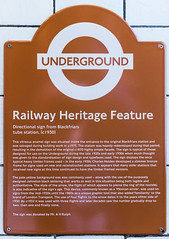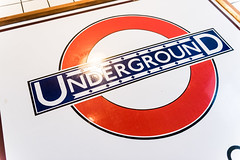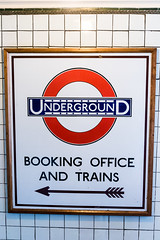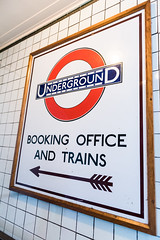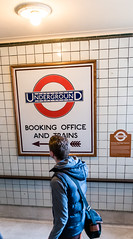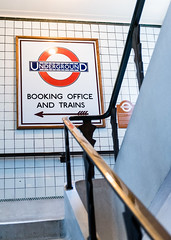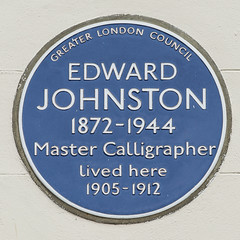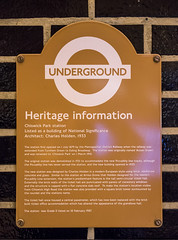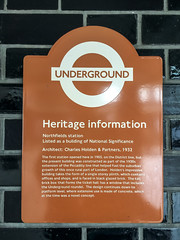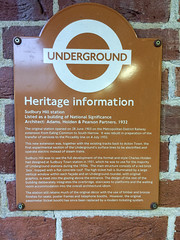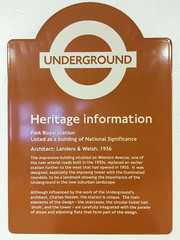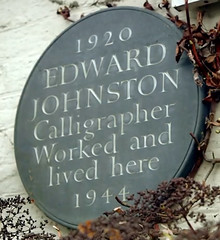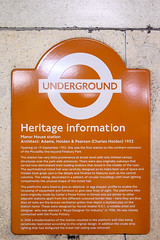Railway Heritage Feature Directional sign from Blackfriars tube station, (c1930) This vitreous enamel sign was situated inside the entrance to the original Blackfriars station and was salvaged during the building work in c1975. The station was heavily redeveloped during that period, resulting in the demolition of the original c1870 highly ornate facade. The sign is typical of those designed for use on the Underground during the late 1920s and early 1930s when much thought was given to the standardisation of sign design and typefaces used. The sign displays the ones heavy timber frames used – In the early 1930s Charles Holden developed a slimmer bronze frame for signs used on new and reconstructed stations. It appears that many older stations that received new signs at this time continued to have the timber framed versions. The pale yellow background was also commonly used – along with the use of the purposely designed Johnston black lettering that works so well in this situation being both legible and authoritative. The style of the arrow, the flight of which appears to pierce the ring of the roundel, is also indicative of the sign’s age. This device, commonly known as ‘Mexican arrow’, was used on signs from the mid-1920s until the 1960s as a unique graphic tool and also added familiarity to the brand London Transport. The use of four flights to the arrow dates it to the years either side of 1930. By c1932 it was used with three flights and later decades saw the number gradually drop to two, then one and finally none. The site was donated by Mr. A H Rolph
55 Broadway, London
Google Streetview
OpenStreetMap


